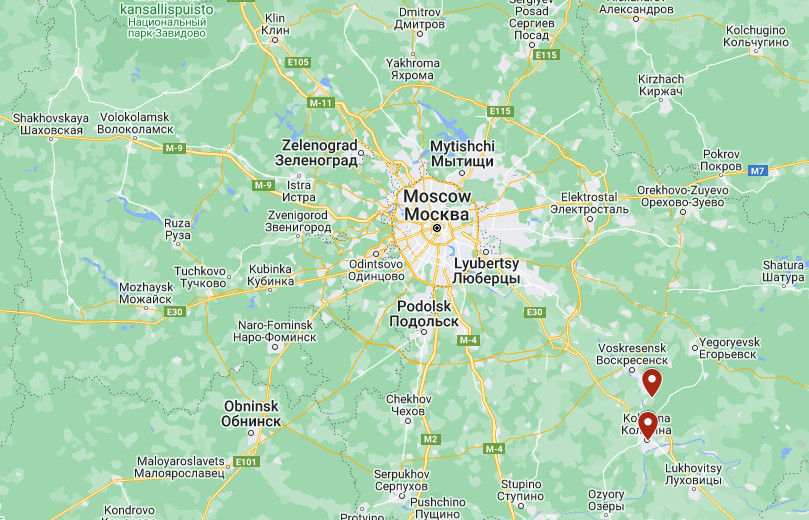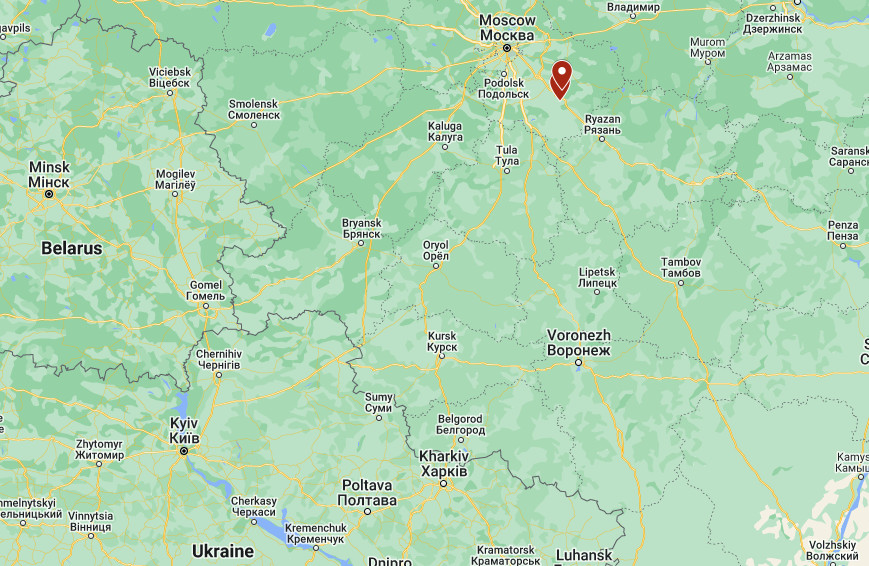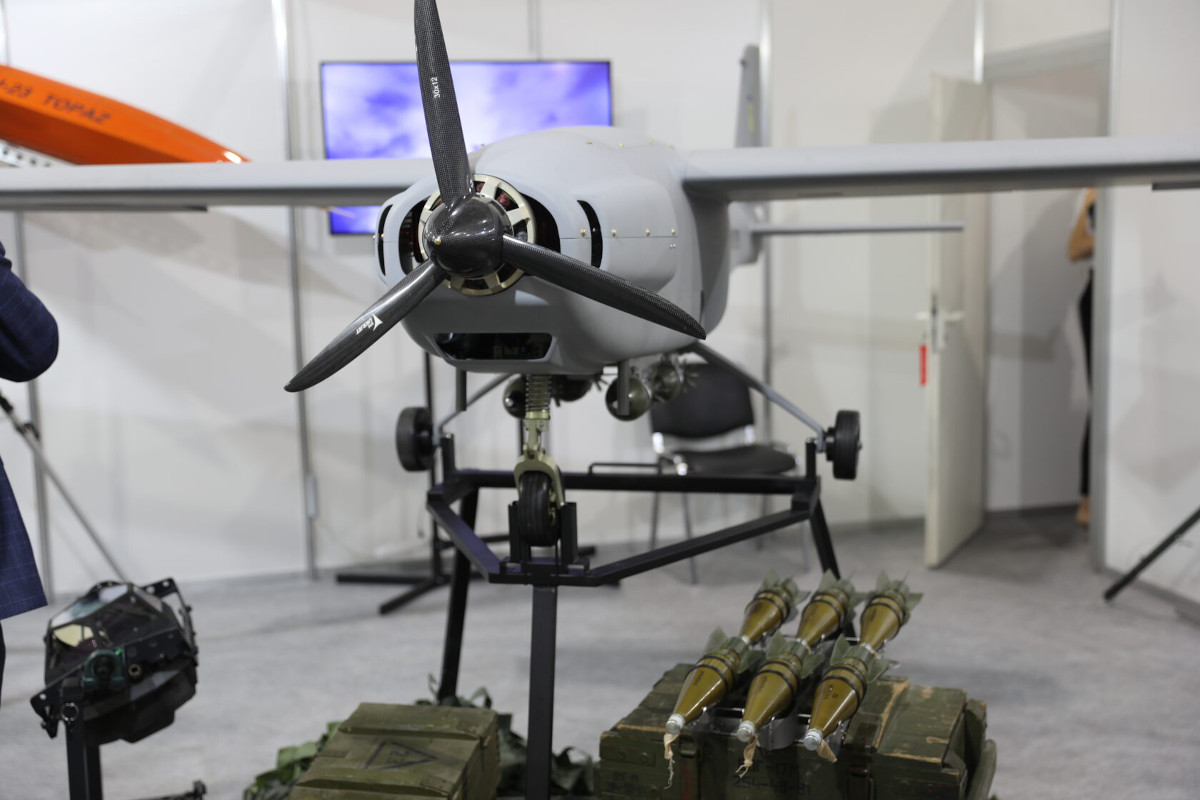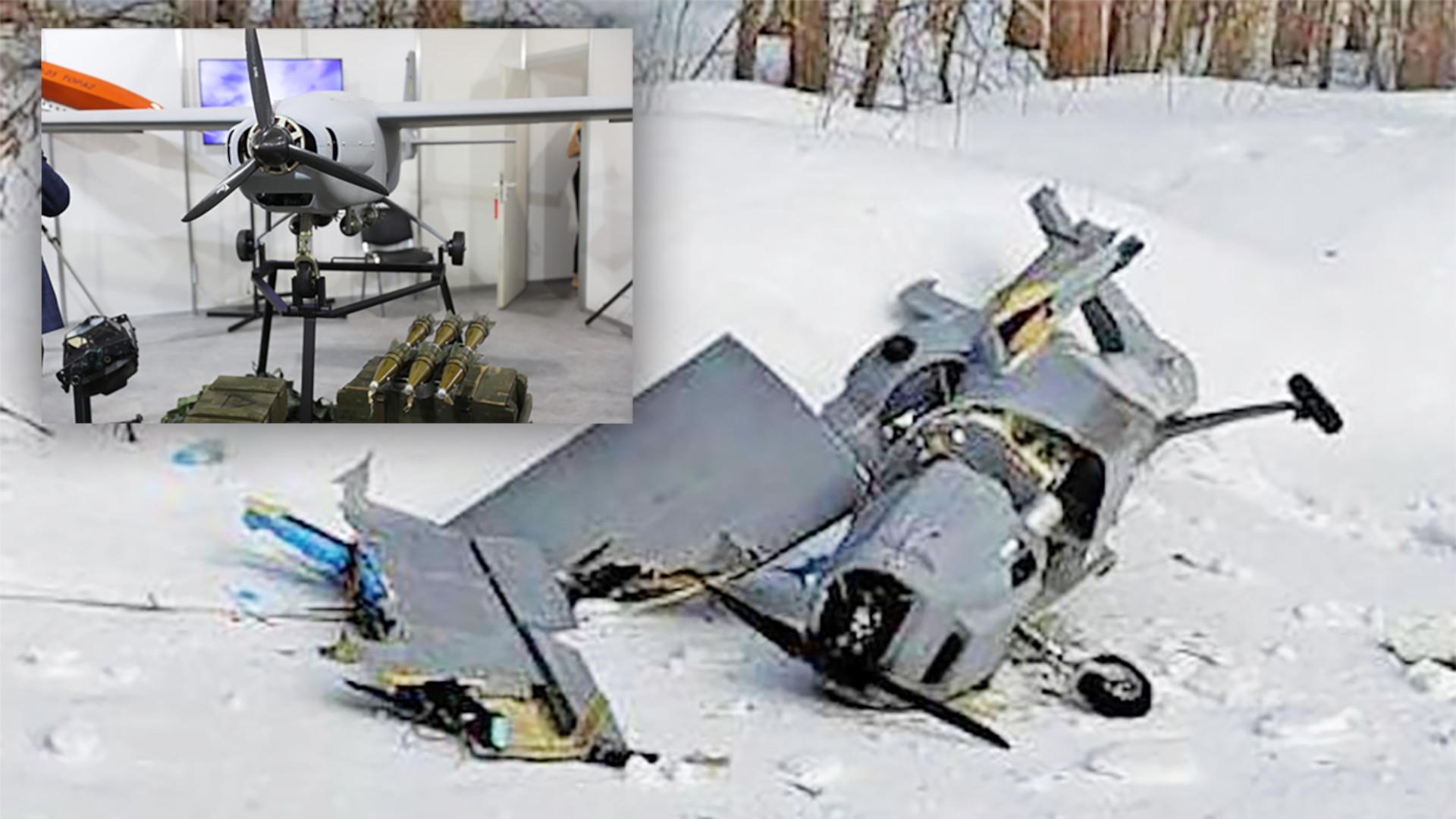A Ukrainian-made UJ-22 drone has come down in Russia within 70 miles of Moscow. This appears to be the closest a Ukrainian uncrewed aerial system has gotten to the Russian capital and follows the unexpected deployment of additional air defense assets there last month. This incident is also just one of a recent flurry of apparent Ukrainian drone attacks, or at least attempted attacks, on Russian targets in the past 24 hours or so.
Andrei Vorobyov, governor of the broader Moscow region, issued a statement about the incident earlier today, claiming that the drone was likely targeting a “civil infrastructure facility.” Where exactly the drone came down and why is not immediately clear.
There are conflicting reports that the wreckage of the drone – pictures and videos of which are now circulating online – is situated near the village of Gubastovo or the town of Kolomna. Gubastovo is approximately 62 miles (100 kilometers) from Moscow, while Kolomna is around 68 miles (110 kilometers) away. Both locations are in the Kolomensky District and are some 276 miles (444.5 kilometers) and 283 miles (455.5 kilometers) from the Ukrainian border, at closest, respectively. Kolomensky is home to a compressor station belonging to Russia’s state-run natural gas company Gazprom. This station, which helps gas move through associated pipelines in the area, has been suggested as a possible target.


At the time of writing, Ukrainian authorities do not appear to have issued any statements of their own about the drone incident near Moscow, which is not unexpected. The government in Ukraine typically does not officially acknowledge strikes inside Russia proper.
Pictures of the wreckage show that it is clearly a UJ-22 made by the Ukrainian company UKRJET. This is a plane-like drone with fixed tricycle landing gear that is designed to take off and land on a conventional runway. Powered by a small gas engine driving a single three-bladed propeller at the front, it has an absolute maximum range of 800 kilometers (just over 497 miles) and can stay aloft for up to seven hours, according to the manufacturer’s website. This would, in principle, put the Moscow region within its reach from a launch point near the Ukrainian-Russian border.
The UJ-22’s actual range and endurance are, of course, dependent on its payload and other factors. In addition, UKRJET says that its onboard communication links only allow direct operator control out to a range of 100 kilometers (62 miles). The drone can fly longer distances to a designated location using a preplanned flight plan. An operator closer to the final destination could conceivably take control when the drone gets close enough.
UKRJET has shown weapon options for the UJ-22 in the past, including racks to carry mortar rounds and rocket-propelled grenade warheads reconfigured as small air-dropped munitions. It could potentially be turned into an improvised kamikaze drone via the addition of an internal warhead of some kind, as well.

It’s not immediately clear from what has been seen of the wreckage so far whether the example that came down near Moscow was armed in any way or if it might have been carrying any other kind of payload. Even without a payload of any kind, sending a drone like the UJ-22 into this part of Russia could have provided Ukrainian forces with valuable insights into their opponent’s air defense capabilities, including their abilities to spot and track relatively small targets, and their standard operating procedures. There are indications that Russian forces have been somewhat similarly probing Ukrainian air defenses using balloons with radar reflectors.
The Russian military’s deployment of Pantsir air defense systems on top of various buildings in Moscow proper and near other key locations in the area in January had already pointed to increased concerns about potential attacks. Additional S-400 surface-to-air missile batteries appear to have also been deployed within the city limits in recent months. This is all on top of the substantial air defenses understood to have been in place to protect Russia’s capital, to begin with.
Whatever the UJ-22’s payload may or may not have been and regardless of what its intended mission was, the fact that it managed to get within between 60 and 70 miles of Moscow is a significant development. The drone’s appearance so close to the capital has clear propaganda value for Ukraine and could prompt new criticism of Russian President Vladimir Putin’s handling of the conflict from inside the country.
In addition, while Ukrainian drone strikes inside Russia proper are not new, the UJ-22 incident near Moscow is part of what appears to be a notable uptick in those operations just recently. It is just one of a number of apparent Ukrainian drone attacks or attempted drone attacks inside Russia just in the past day or so.
Overnight, multiple drones came down in the Russian city of Belgorod, much closer to the Ukrainian border. Pictures and videos that subsequently emerged online showed what appeared to be a previously unseen kamikaze drone design, as you can read more about in The War Zone‘s separate reporting on that incident.
Russian authorities have also said that Ukrainian drones struck a Rosneft oil depot in the town of Tuapse in the Krasnodar region on the country’s Black Sea coastline. Officials in Russia say they recovered the remains of at least one other Ukrainian drone in the neighboring Adygea region, but what its target might have been is unclear. At present, it is not known what types of drones might have been involved in these incidents, though the wreckage in Adygea appears to show components of a jet engine of some kind.
The airspace around the Russian city of St. Petersburg was also closed for a time today for unclear reasons, which brought operations at the nearby airport in Pulkovo to a halt. There are unconfirmed reports that an “unidentified flying object” prompted this and led to the scrambling of fighter jets.
The Russian Ministry of Defense subsequently issued a statement about air defense exercises in the region, but did not specifically say they had occurred in the vicinity of St. Petersburg or that they had prompted the airspace closure, according to a report from the AP.
Just as this story was being written, new reports of at least one explosion and subsequent fires at a Russian naval air base in Yeysk on the country’s Sea of Azov coastline have emerged. Yeysk is also in Russia’s Krasnodar region, where the apparent attack on the Rosneft depot had occurred earlier. There is already speculation that this may have been caused by more Ukrainian drones.
Separately, Russia’s Emergency Ministry blamed an air raid alert that interrupted some television and radio programming today on the “hacking of the servers of radio stations and TV channels in some regions of the country.” There does not appear to be, so far, any independent verification of this.
While we can’t say for sure whether all of these incidents are linked, which may be part of a larger coordinated Ukrainian effort, there are certainly indications that this could be the case. Ukraine has been conducting strikes inside Russia, predominantly using drones of various kinds, with some regularity for at least the better part of a year.
It is also worth noting that the Ukrainian military is now also in line to receive additional weapon systems capable of striking targets at longer ranges from the United States and the United Kingdom. However, the U.S. government, at least, has typically turned such weaponry over to Ukraine’s armed forces with at least the understanding that they will not be used to strike Russian territory.
“It is one of our strategic military goals that we try to drive a wedge in the Russian front in the south – between (occupied) Crimea and mainland Russia,” Vadym Skibitsky, the deputy head of Ukraine’s Military Intelligence directorate, told the German newspaper Berliner Morgenpost as part of an interview for a piece published earlier this week. “It is possible that we will also destroy arms depots or military equipment on Russian territory, for example around the city of Belgorod.”
For Ukraine, being able to conduct an increasing number of strikes inside Russia itself has also been an important way of bringing the war home to average citizens there. There is a clear hope that these attacks, in addition to their practical military aims, could help fuel popular anti-war sentiment and general discontent.
Speaking today at the headquarters of Russia’s Federal Security Service, or FSB, the country’s main internal security arm, President Putin demanded that they take new steps to better secure the country’s borders.
All of this comes as the conflict in Ukraine has now entered its second year. Ukrainian forces are seeking to keep up the momentum they build in the latter half of last year in the face of Russian forces renewing their efforts to make gains in the eastern part of the country.
All told, there are signs that the UJ-22 that came down near Moscow today, as well as the other recently reported drone incidents, could be the beginning of an expanded Ukrainian campaign to hit targets inside Russia.
Contact the author: joe@thedrive.com
